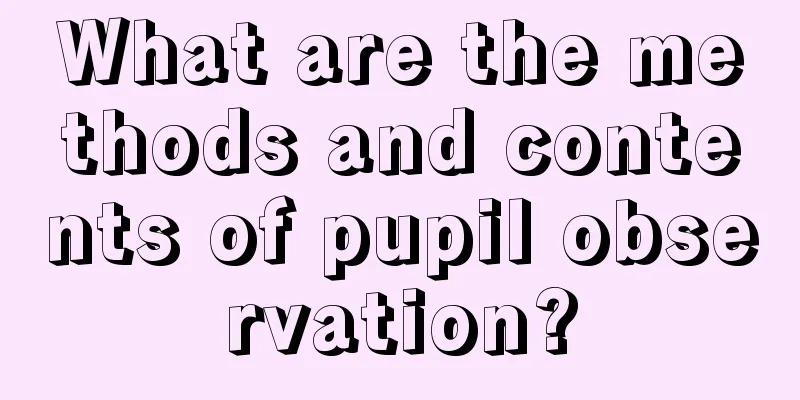What are the methods and contents of pupil observation?

|
The pupil is very important to the human body. If there is a problem with the pupil, it will easily lead to some eye diseases. It will also easily affect vision and cause vision loss, which will greatly affect normal life and work. The pupil observation method and content is an inspection method based on whether the pupil has any abnormal reaction. The light can be shined on the eye for inspection. How and what should pupils be observed? Normal value A normal pupil is round, black and transparent, equal in size on both sides, and about 2.5 mm in diameter. In addition to changes in physiological regulation, if the pupil diameter is less than 1.5 mm or greater than 5 mm, the edge is irregular, the color is abnormal, the reaction to light is slow or absent, etc., it often indicates the occurrence of certain diseases. Clinical significance Abnormal results: White pupils are seen in cataracts, iridocyclitis, glaucoma, eye trauma, high myopia, or systemic diseases such as diabetes. Green pupils are common in glaucoma. People who need to be checked: patients with cataracts, glaucoma, and myopia. Precautions Unsuitable people: those with no special inflammation in the eyes. Taboos before examination: Irritable mood will affect pupil examination. Requirements during the examination: Lie down quietly and do not use too strong light. Inspection process (1) Direct reaction to light: The patient is asked to sit facing the light with both eyes looking straight ahead at a distance of 5 meters. The examiner covers both eyes of the patient with the palm of his hand, removes the cover of one hand and observes whether the pupil of that eye contracts. Then he covers this eye again and removes the other hand to observe whether the other pupil contracts. The speed and degree of contraction of the two pupils are compared. (2) Indirect light reaction or sympathetic reaction: the patient is also asked to sit facing the light, one eye of the patient is covered, and when the cover is removed, the contraction of the pupil of the other eye is observed. Related diseases Heterochromic iridocyclitis, primary juvenile glaucoma, primary infantile glaucoma, glaucoma caused by penetrating keratoplasty, glaucoma secondary to aphakia and pseudophakia, glaucoma caused by increased episcleral venous pressure, neovascular glaucoma, pigmentary glaucoma, drug-related glaucoma, crystalline protein allergy glaucoma Related symptoms Painful and sticky eyes, sticky tears, blurred vision, sudden blindness, glaucoma spots on the lens, glaucoma spots, juvenile cataracts The pupil examination includes checking the pupil's appearance and pupillary reflexes. The external examination includes the size, shape, number, position of the pupils, and whether the edges are neat. The two sides should be compared during the examination. |
<<: I always get startled when I sleep
>>: What is the reason for a grayish-white circle around the pupil?
Recommend
The more times you ovulate, the higher the risk of ovarian cancer?
The exact mechanism of ovarian cancer has not yet...
What should I do if I have dry intestines and constipation
Dry bowel constipation is a common problem, so if...
What are the symptoms of acute allergic conjunctivitis
The importance of eyes is beyond words, but they ...
What are the fastest and best ways to get rid of acne
Adolescence is probably the time when acne occurs...
How can we prevent cervical cancer? What details should we pay attention to in preventing cervical cancer?
Bamboo fungus stewed with day lily Ingredients: 1...
Why are the eye bags getting bigger
Eye bags are a common phenomenon in normal times....
What are the symptoms of gastric cancer
As the disease progresses, it may manifest as inc...
How to clean shrimp tails
Many new words have appeared in people's live...
There are two main clinical manifestations of prostate cancer
Prostate cancer is a disease that many men have h...
How effective is traditional Chinese medicine in treating liver cancer
Now more and more people are being afflicted with...
What are the hazards of hamartoma
Hamartoma, many people do not know about this dis...
Nutritional recipes for junior high school students
For students who are in school, they must have ad...
How to quickly get rid of acne and acne marks?
Acne is a concern for teenagers, especially for t...
How much Astragalus should be added to boil water at a time
In daily life, in order to absorb the medicinal e...
What foods are good for liver cancer? Eat these foods if you have liver cancer
With the development and progress of society, can...









